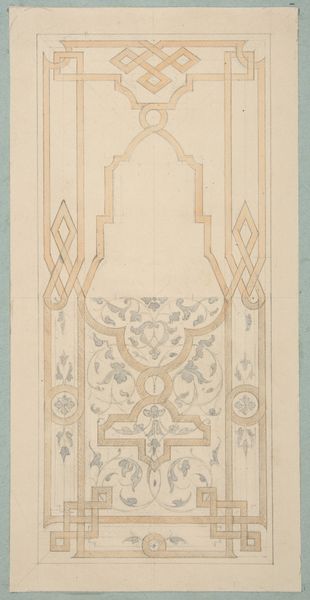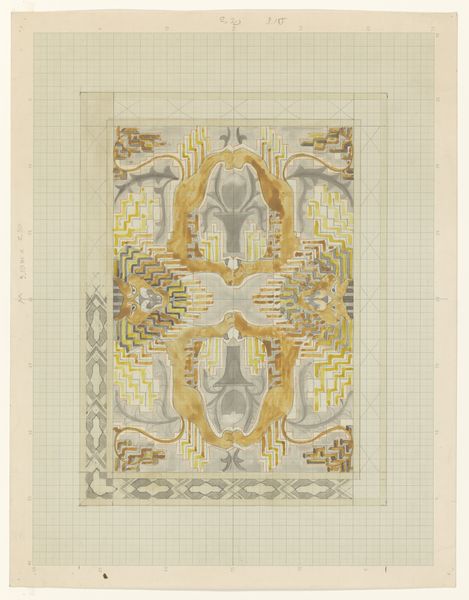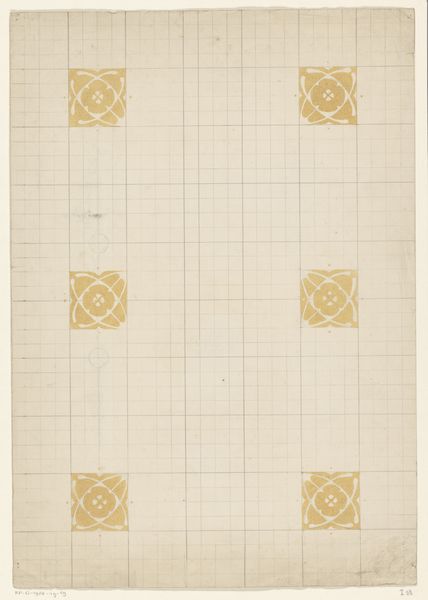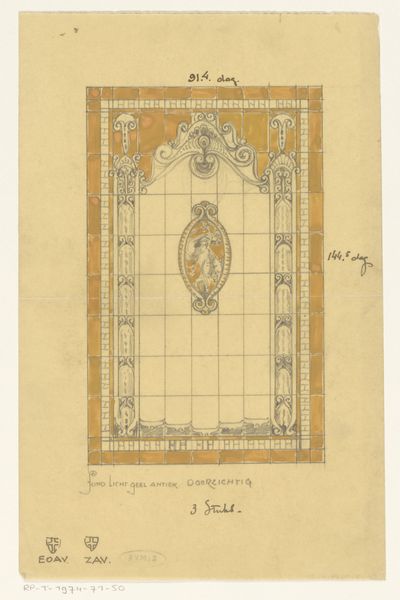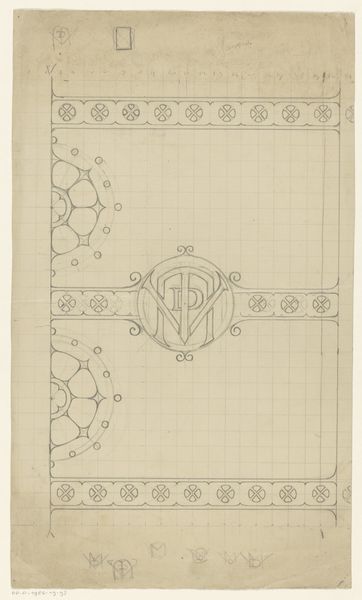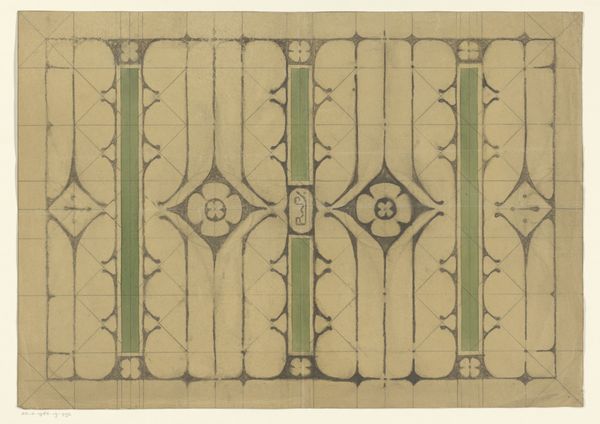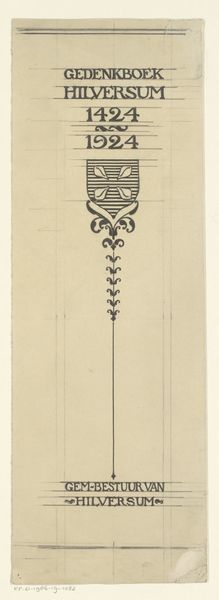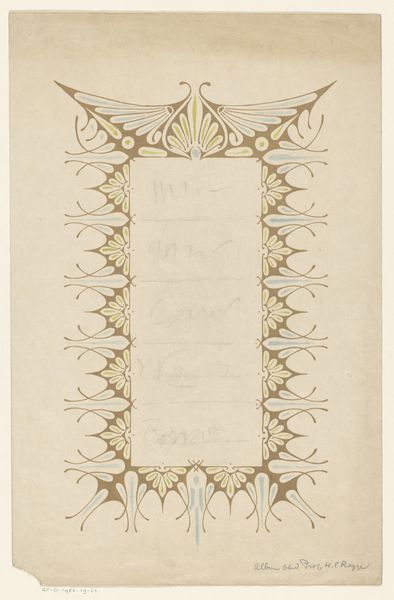
Kader voor een opdrachtblad voor een album voor Prof. Mr. L. den Hartog 1902
0:00
0:00
drawing, paper, pen
#
portrait
#
drawing
#
art-nouveau
#
paper
#
form
#
geometric
#
line
#
symbolism
#
pen
#
history-painting
Dimensions: height 398 mm, width 279 mm
Copyright: Rijks Museum: Open Domain
Editor: This is Reinier Willem Petrus de Vries' "Kader voor een opdrachtblad voor een album voor Prof. Mr. L. den Hartog," created in 1902 with pen on paper. It strikes me as quite intricate, almost like a blueprint. What do you make of it? Curator: It's fascinating to see the underlying structure laid bare, isn't it? The grid, usually hidden in a finished work, is right there, exposing the artist’s process. And the symbolic elements – the scales of justice, the stylized animals – all rendered with such deliberate lines, point to the labor and the thought involved in crafting this object, intended to adorn or frame another piece. Notice the artist’s hand at work, guiding the materials and the final consumption in society as an elite product. Editor: So, you're focusing on how it was made rather than its symbolic meaning? Curator: The two are intertwined! The artist chose these materials and this meticulous technique precisely to convey those symbolic meanings. Art Nouveau was often about elevating craft, blurring the lines between fine art and design. It invites a closer look at the conditions of production and reception of that time. Why use costly paper for a design if something more simple would do the trick? Editor: That’s a perspective I hadn't considered. I was caught up in trying to decode the symbols, but the emphasis on materials and technique makes sense, especially given the Art Nouveau context. How does this subvert what might be regarded as "high" art? Curator: It forces us to acknowledge the often-unseen labor that goes into even the most seemingly effortless creations. By laying bare the underpinnings of its own creation, this image resists a purely aesthetic reading. Do you agree it’s interesting to see a sort of behind-the-scenes expose here? Editor: Yes, definitely. I realize now that appreciating the art in design is about recognizing its role in material culture. Thanks for showing me the real working method. Curator: Exactly! Examining these elements really enriches our appreciation of its place within its time.
Comments
No comments
Be the first to comment and join the conversation on the ultimate creative platform.
